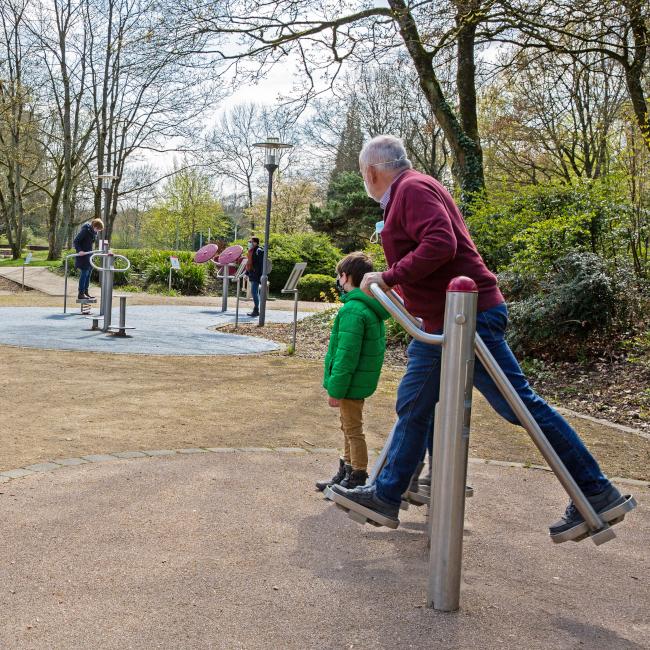Keep fit – Reloaded
published in sb magazine 5/2021
The Grugapark in Essen is a great example of a sustainably planned and equipped outdoor gym. The success of such installations depends on selecting the right location, having an appropriate combination of exercise stations and the quality and safety of the equipment used.
The keep fit movement of the 1970s can be regarded as the forerunner of today‘s fitness boom and the outdoor gym. Trim trails were circular routes three or four kilometres in length along which 15 to 20 exercise stations were installed. The movement wasn‘t targeted at competitive sports, but an affluent society afflicted by obesity and cardiovascular disease.
During the 1990s, new trend sports emerged. Jogging in particular enjoyed a boom in popularity. The keep fit movement, and fitness trails especially, faded into oblivion. Many local authorities simply didn‘t have the money to pay for their long-term upkeep.
Since the revival of the keep fit movement in Germany, which began in 2008, it‘s common nowadays for a variety of styles of outdoor gym to be installed instead of individual pieces of apparatus.

photo: Martin Michalak Fotografie